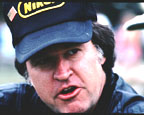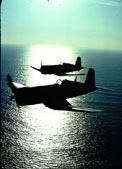 Grassroots
Grassroots

Observations
Grassroots
Budd Davisson, July, 1995
Observations
I used to have this friend up in Sussex Country, New Jersey by the name of Ralph Space. A real character in the finest sense of the word, when our paths finally crossed he had long since cruised through eight exciting decades of life and acted as if he had another eight to go. He was always carrying on about the latest addition to his already impressive museum and his latest old car/old gun/old whatever acquisition. He was excited about what he had planned for next week, next month, next year. He acted as if he was never going to die. A fate not even he escaped.
Mr. Space and I hit it off immediately and I often wondered why. Now I know it was because he and I shared a mutual fascination with the artifacts of history.
Mr. Space collected just about everything. Another trait we shared. Among his many interests, he had been a major Indian artifact collector for most of his life and was constantly trying to pass along his feelings for the civilizations which had gone before. More important he was continually pointing out that history is everywhere under foot and within reach.
To prove his point, he once dragged my son, Scott, and me out into a field, walked around for a few minutes, then stuck his walking stick in the ground and announced, "Okay, Scott. There's an arrow head within 20 feet of this stick. Let's see if you can find it."
Ralph eventually had to point the arrow head out to us, but he'd made his point. History is everywhere. It's often where you least expect it and in a form you can't begin to predict. All you have to do is look for it.
When I'm driving or flying cross country, my head is on a constant swivel and part of me is going nuts because I can't see beneath the ground to the millions of artifacts I know are there. I'm also frustrated because I can't see over the ridge or down into that arroyo to see where man has left his mark. But, observant as I think I may be, it's amazing what I miss. This point was brought home twice last week.
Half way between Phoenix and San Diego, a rare green spot straddles the interstate. It is an oasis in an area where green has been baked out of the color spectrum. The signs identify it as Dateland, Arizona. I have driven that section of highway dozens and dozens of times. Every time I do, I notice an obviously manmade, concrete-faced dirt hump just north of the highway. It always looked awfully familiar and everytime I'd see it, I'd think, "That sure looks like a bunker for sighting-in aircraft machine guns." Then a couple weeks ago, a friend and I were researching the types of ammo carried by various foreign WWII fighters and he mentioned that there was a sighting bunker out by Dateland. I had been right!
Two days later I was again driving that same road and, as I topped the low overpass at Dateland, I perked up my history antennae. I carefully studied the area around the bunker which appeared as a humped-back island in a sea of sage brush. Yes, I could see vague outlines in the brush. Something had been out there. We rolled on for a few more seconds and I was still trying to look back over my shoulder as we passed the immediate location of the bunker. Then, totally without warning, as I brought my eyes back forward, I saw it; Suddenly I was looking through a gap in the brush and right down the centerline of a wide, long expanse of broken asphalt that ran 90 degrees to the highway. A runway! The hair literally stood up on my arms. The thought instantly hit me that I was looking at a long forgotten spot where so many young men had learned the art of the aerial warrior. Then my speed carried me out of sight and it was gone.
I couldn't get the incident out of my mind. Every single day thousands of people drive within a few dozen yards of that runway and most of us never know it's there. A half century ago Mustangs or P-38s, Thunderbolts or whatever, roared low over that exact spot as they took off with guns loaded and came back with them empty. Somewhere in the distant, low, parched hills, millions of 709 grain .50 caliber bullets probably lie buried deep in a target range the desert has since reclaimed and rendered invisible.
How many of the young men who blasted low over the interstate's present location lived to become old men? How many died right there on that spot, victims of mechanical failures or failures of their own skills? Thousands of lives were changed right there next to the highway, a fact that goes completely unnoticed as we whiz past never knowing an ancient nesting ground for eagles is so close. I find that both sad and exciting. Then later in the week, a similar incident left a similar impression.
Chris Jersey was ferrying me up to Prescott to get the Pitts out of maintence. He was taking a path I'd flown often, but this time it was in a PA-12 and we were low enough to appreciate the scenery. "Look what I found," he said and he pulled the airplane around pointing out his find with a wing tip. The outlines were unmistakable: The low rubble rock walls of timeless Anasazi dwellings were perched on the edge of the mesa looking down on yet another interstate. The current millennium hadn't yet reached the halfway point when those rocks were newly placed and a small community was fighting a losing battle against the desert. I've flown over that part of Table Mesa at least fifty times and not once did I suspected what I was missing
As I looked at those ruined walls, my mind shot back to Mr. Space. And the asphalt footprint an unidentified air base has left in the desert. Mr. Space was absolutely right. History is always there within reach. We just have to keep our eyes, and our mind, open for it.